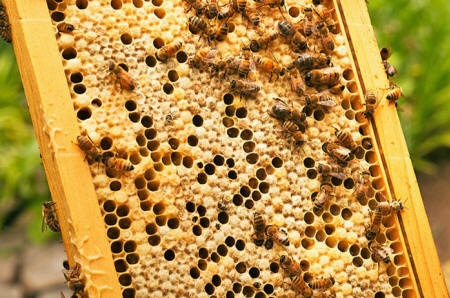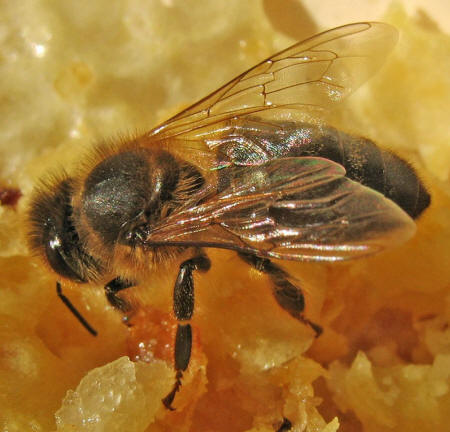|

by Heather Callaghan
September 10, 2014
from
ActivistPost Website

Not just a possible alternative - but
totally a preferable alternative to antibiotics whenever possible.
People are already using this incredible
healing substance without having needed a nod of approval from
researchers. And no, we're not talking about using the actual bees.
While consumers of
raw honey can tell you that it
works wonders, researchers wanted to know exactly why? What have
they been missing? What are the exact compounds that make raw honey
nature's antibiotic? How has it protected bee colonies forever
(until recent obstacles set in)?
Raw honey has been used against infections for millennia, before
honey - as we now know it - was manufactured and sold in stores. So
what is the key to its antimicrobial properties?
Researchers at Lund University in Sweden have identified a unique
group of 13 lactic acid bacteria found in fresh honey, from the
honey stomach of bees (Lactic
Acid Bacterial Symbionts in Honeybees - An Unknown Key to Honey's
Antimicrobial and Therapeutic Activities).
The bacteria produce a myriad of active
antimicrobial compounds.
These lactic acid bacteria have now been tested on severe human
wound pathogens such as methicillin-resistant,
...among others.
When the lactic acid bacteria were
applied to the pathogens in the laboratory, it counteracted all of
them.
While the effect on human bacteria has only been tested in a lab
environment thus far, the lactic acid bacteria has been applied
directly to horses with persistent wounds. The LAB was mixed with
honey and applied to ten horses; where the owners had tried several
other methods to no avail.
All of the horses' wounds were healed by
the mixture.
The researchers believe the secret to
the strong results lie in the broad spectrum of active substances
involved. This is the benefit to using a whole substance, as complex
natural compounds have only begun to be studied as a complete
package.
Tobias Olofsson explains:
Antibiotics are mostly one active
substance, effective against only a narrow spectrum of bacteria.
When used alive, these 13 lactic acid bacteria produce the right
kind of antimicrobial compounds as needed, depending on the
threat.
It seems to have worked well for
millions of years of protecting bees' health and honey against
other harmful microorganisms. However, since store-bought honey
doesn't contain the living lactic acid bacteria, many of its
unique properties have been lost in recent times,

The next step is further studies
to investigate wider clinical use against topical human infections
as well as on animals.
The findings have implications for developing
countries, where fresh honey is easily available, but also for
Western countries where antibiotic resistance is seriously
increasing.
There is a
shocking difference between raw
honey and pasteurized, grocery store "teddy-bear" honey which for
all intents and purposes, is
mostly fake.
Raw honey will look more like
butter, but there also benefits to consuming darker honeys. Not only
have people seen results from applying raw honey to wounds and mild
burns, but also in use for
acne,
sore throats and flues,
allergies, better blood sugar
regulation, cholesterol and more.
Manuka honey, although expensive,
provides extra immune and digestion support, plus other first aid
benefits.
Of course research like this would appear now, when we're at the
height of honey bee decline (especially when taking into account
increased food production needs) and the height of
food system deception.
Those are just a few reasons why it's more important than ever to
love thy pollinator - and realize that this liquid gold is your
most cherishable non-perishable.
|


